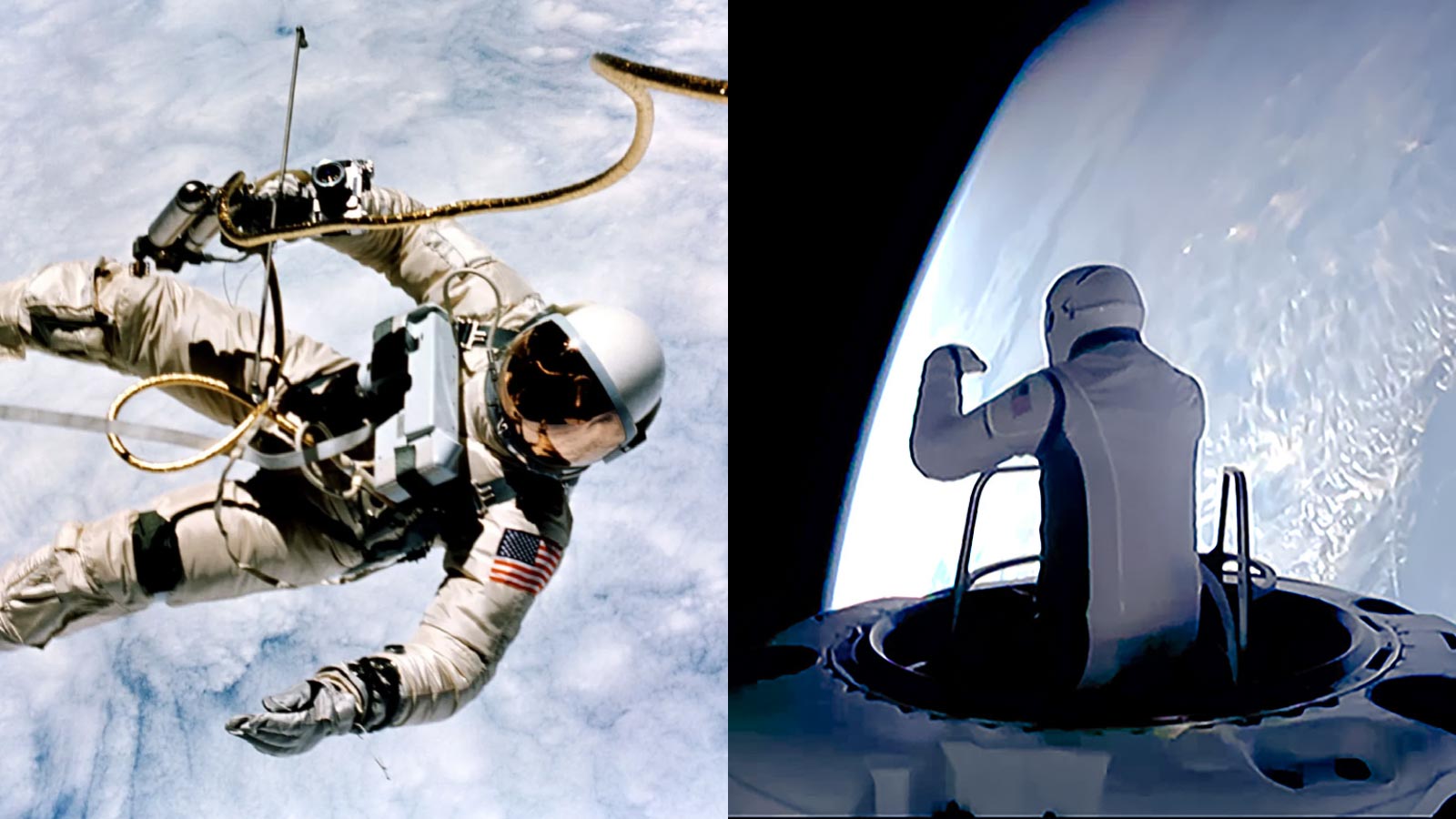Stay Up to Date
Submit your email address to receive the latest industry and Aerospace America news.
When billionaire Jared Isaacman and SpaceX engineer Sarah Gillis took turns poking their upper bodies out of their Crew Dragon capsule, the feat was less daring than the first spacewalks six decades ago.
In March 1965, in the midst of the Cold War space race, Soviet cosmonaut Alexei Leonov climbed through the airlock of his Voskhod-2 capsule and floated in free fall, tethered to his spacecraft by only a skinny umbilical. Three months later, when NASA astronaut Ed White ventured out of the Gemini IV capsule, NASA added a twist: He initially maneuvered by firing a handheld “zip gun” full of pressurized oxygen, stretching the umbilical to nearly its full 8-meter length.
By contrast, Isaacman performed what those in the spaceflight business call a “stand-up EVA.” He emerged through the hatch opening normally reserved for docking to the International Space Station, while a camera on the hatch captured the scene for a live audience on X. He paused for a few moments to take in the view over New Zealand, then gripped one of the “skywalker” rails at the hatch opening. He slowly rotated his free arm back and forth, then switched to the other arm and also raised his legs. It all took about 10 minutes, and then Isaacman traded places with Gillis, who ran through a nearly identical set of exercises. Neither of them exited Dragon entirely, hence the distinction of a “stand-up” EVA.
Isaacman, in a post-mission tweet, described the maneuvers as “basic in comparison” to spacewalks done by professional astronauts. The purpose was to make Isaacman and Gillis the first private citizens to conduct an EVA, as well as test the mobility of the suits. It’s all part of SpaceX’s long-term plan to send millions of people to the moon and Mars. Without a Soviet Union to beat, SpaceX and Isaacman — who paid an undisclosed sum for the mission — had more leeway to dictate the schedule and objectives for Polaris Dawn.
For sure, it was “prudent” not to have the crew float outside the capsule, says veteran spacewalker Tom Jones, a former NASA astronaut. It was the first SpaceX-run EVA, and the first time the suits shielded humans against the harsh environment of space. Jones, who is not affiliated with SpaceX and Polaris Dawn, expects this will be the first in a series of increasingly ambitious EVAs that will be conducted to demonstrate SpaceX’s suit and procedures.
He also expects the mission to have impacts beyond SpaceX: “They’re rebuilding Gemini, but that’s the first step in a process where commercial companies will one day be maintaining private space stations and eventually doing lunar EVAs.”
Based on his own spacewalks from shuttle orbiters, Jones believes such tasks will require SpaceX to at some point develop a second, bulkier EVA suit, similar to the ones that astronauts don today to make repairs to ISS. Those suits have fiberglass and aluminum upper torsos “that you can attach hard things to, like cameras and power tools,” he says, and eliminate the oxygen umbilical in favor of a life support backpack so astronauts can “travel farther without having the restraint from the umbilical.”
About cat hofacker
Cat helps guide our coverage and keeps production of the print magazine on schedule. She became associate editor in 2021 after two years as our staff reporter. Cat joined us in 2019 after covering the 2018 congressional midterm elections as an intern for USA Today.
Related Posts
Stay Up to Date
Submit your email address to receive the latest industry and Aerospace America news.




